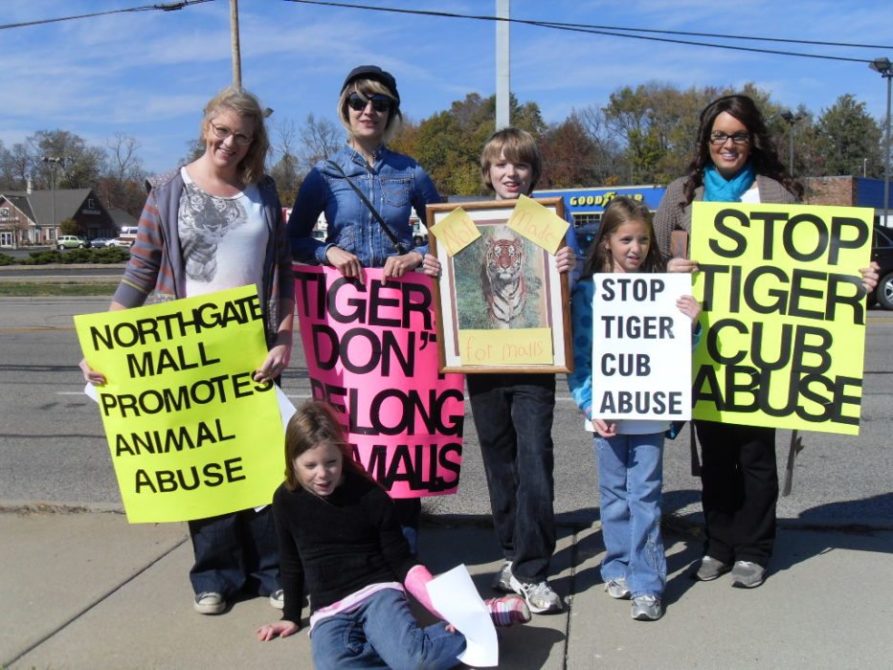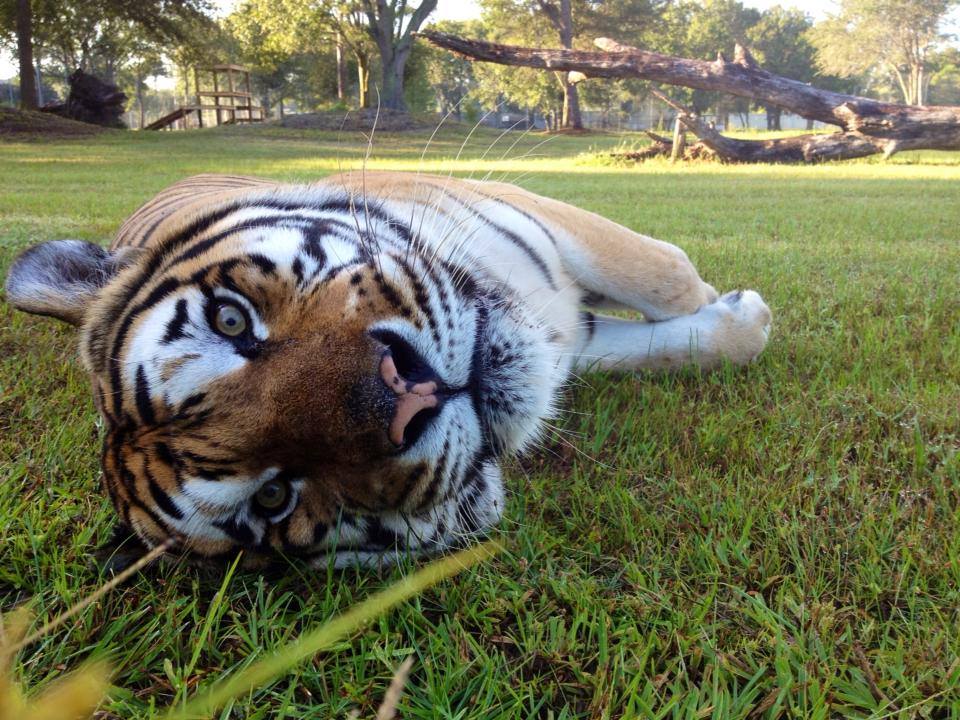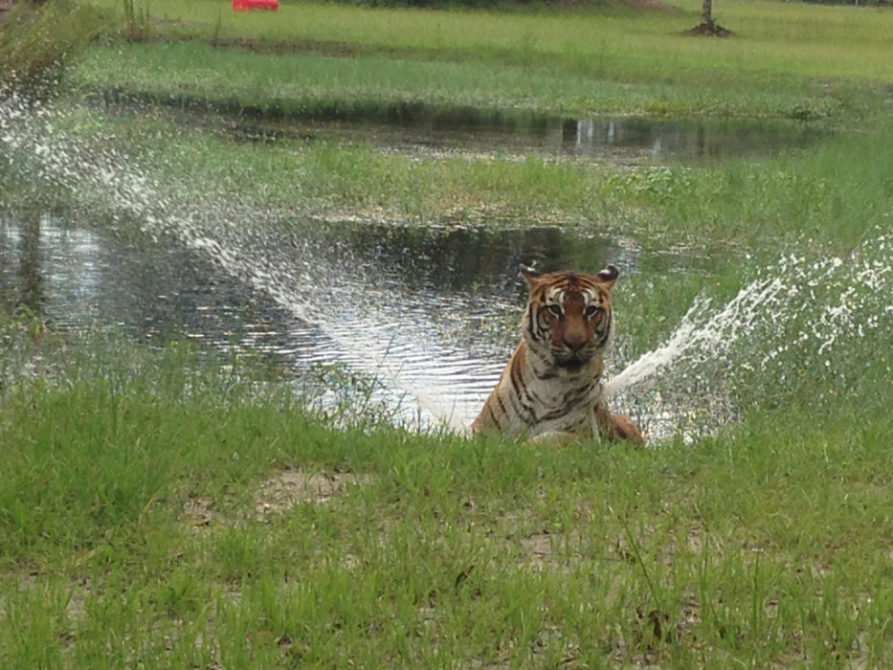Why Regulations Won’t Work
Why Regulating Conditions Under Which Big Cats Are Kept
SIMPLY DOES NOT AND CANNOT WORK
The only way to stop the abuse of big cats in captivity is to ban private ownership. Trying to “regulate” the conditions under which the cats are kept by private owners is simply impossible. This has been proven by years of experience despite good intentions by enforcement officials.
The minimum standards of care that typically are established are inhumane.
There are federal regulations, and some state regulations, setting minimum standards of care. The question is whether these minimum standards are humane. For instance, Florida Wildlife Conservation Commission regulations allow two tigers to spend their entire lives in a cage that is 10’ x 20’ (200 square feet). That is smaller than the typical parallel parking spot (9’ x 24’). The USDA federal rule for people owning the cats for commercial purposes (it does not apply to pet owners) does not specify the number of feet required for a big cat. It refers to the ability to stand and turn around, and lists factors an inspector should consider in making a judgment. But based on what we see at facilities USDA inspects, a space no larger than what the Florida regulation requires is usually acceptable to USDA.
The regulations help by at least making even smaller cages illegal.
But, to those who love these animals, the minimum standards are not humane. Keeping two adult tigers in a parking space would be like locking a human being in a small bathroom for life. In contrast, the Global Federation of Sanctuaries, which sets standards for accredited sanctuaries, requires a minimum of 1,200 square feet of space for a big cat enclosure to be humane. That is six times the Florida legal minimum. In addition to being small, these legal cages usually have concrete floors. That makes it easy for the owners to clean because it can be sprayed with a hose. But being on the hard surface is detrimental to the feet and bones of the cats. No compassionate human being could look at two tigers kept in a concrete, chain link cage the size of a parking space and ever conclude this is humane treatment of an intelligent, sentient being that needs mental stimulation and is built to roam and hunt.
Impossible to have enough inspectors and limits on what they can detect.
There are estimated to be about 10,000 big cats in private hands in the U.S., a small percentage of which are held in accredited zoos and sanctuaries. 680 facilities hold USDA licenses to use big cats for commercial purposes (breeding, selling or exhibiting). No one knows how many other owners have them as pets and do not have USDA licenses. The same inspectors who monitor big cat facilities are also charged with inspecting pet stores, dog, cat and other pet breeders and dealers, farms, slaughterhouses, laboratories and other animal-related businesses. There are only about 80-100 inspectors charged with monitoring more than 10,000 such facilities. It is financially impractical to have enough inspectors to inspect all these facilities regularly. When violations are serious or recurring, the enforcement process is very time-consuming for both inspectors and legal staff. It often takes years and many man-hours. This seriously limits how many violators can be prosecuted.
When inspectors do arrive to inspect, there are very severe limits on what they can detect.
They can detect defects in the physical aspects of the facility. They can look at the record keeping, but records are easily fabricated. If the entry says the cat was fed on a given day or received medical treatment, how would the inspector know if this is true? The inspector will also not be able to detect abusive treatment, which of course is not going to happen in front of the inspector. That can only be detected through undercover operations. So, while it sounds good to have regulations governing how big cats are kept and treated, the degree to which the regulations can be enforced is severely limited by the cost of the manpower needed for enforcement.
Enforcement process takes years while the animals suffer.
Few facilities, only the very worst, lose their USDA license. Typically a facility will be cited and given a chance to correct the citation, which is reasonable. But, in practice, due to their workload, the inspector often will not return for many months to check. Citations are often issued year after year before further action is taken. Then, if enforcement action is taken, the court process can be delayed for years. In some cases, after years of the animals being abused, a settlement is reached with only a modest fine, temporary suspension of license and an agreement to comply in the future. In rare cases, the facility or individual does lose their USDA license and is forced to place the animals elsewhere or have them confiscated. But by the time that happens, the animals, whose maximum lifespan is about 20 years with excellent care, have often spent a huge portion of their lives suffering. Of the handful of the very worst offenders who lose their licenses, some simply continue to operate without a license because no enforcement action is taken to stop them after the license is revoked.
No place for the animals if more enforcement was possible.
What if the government did have the resources to have enough inspectors and lawyers to properly enforce the laws, and found a way to monitor behaviors they cannot currently detect with inspections, and revoked more USDA licenses? Where would the animals go? The handful of accredited sanctuaries can only take in a limited number of animals each year. In recent years, as “hoarders” have built up very large populations of big cats, sometimes over 100, we end up with the equivalent of the banking industry’s “too big to fail” because there is no way to place all these animals. The only alternative is euthanasia. In the field of human child abuse, we have a system of social workers and foster homes across the nation set up to deal with the large volume of abused children. In the field of domestic cat and dog abuse, while many are euthanized, we have a broad national system of shelters and rescue groups devoted to finding new homes for the animals and many people willing to take in rescued animals. There is no such infrastructure for big cats.
Bans are the only solution.
Allowing private ownership of big cats is dangerous to humans and because effective regulation of the conditions under which they are kept is simply impossible, private ownership results in thousands of these animals being kept in deplorable conditions.
Changes in commonly accepted social values start with a few people having a different view.
The new view catches on slowly at first, then builds momentum over time until a majority of people adopt the new view and it becomes the social norm. The idea that women should have the right to vote was at first a subject of ridicule. It took decades to win over enough minds and hearts to make it a majority view, and today we take it for granted.
A very similar process is happening at an accelerating rate in our society, and around the world, with respect to exotic animals. The old view is that these animals are unfeeling objects, to be used as we see fit. Increasingly people now recognize that these are intelligent animals with a range of feelings much like those of humans and that we have a responsibility to treat these majestic animals in a way that meets their physical and psychological needs.
The best evidence of this shift in society’s view is the steady and accelerating trend in state laws to ban private ownership. Since 2005, eight more states have implemented some form of ban on private ownership. There are two compelling arguments for banning private ownership of big cats. One is a simple fact that trying to regulate conditions under which they are kept is totally impossible. Overwhelming evidence shows that despite the regulations there are thousands of animals kept in inhumane conditions. The second reason, recognized by a large and rapidly growing segment of our population, is that banning private ownership is simply “the right thing to do.” These wild animals should not be pets or used for entertainment or for financial gain. We should not be keeping them in small prison cells or carting them around in small cages for the financial gain of a few or to satisfy the egos of those who selfishly want to generate attention by having them as “pets.” Our efforts should be spent on preserving these threatened and endangered species in the wild where they belong.
To find out more about how to end the tiger cub petting abuse in America go to:







